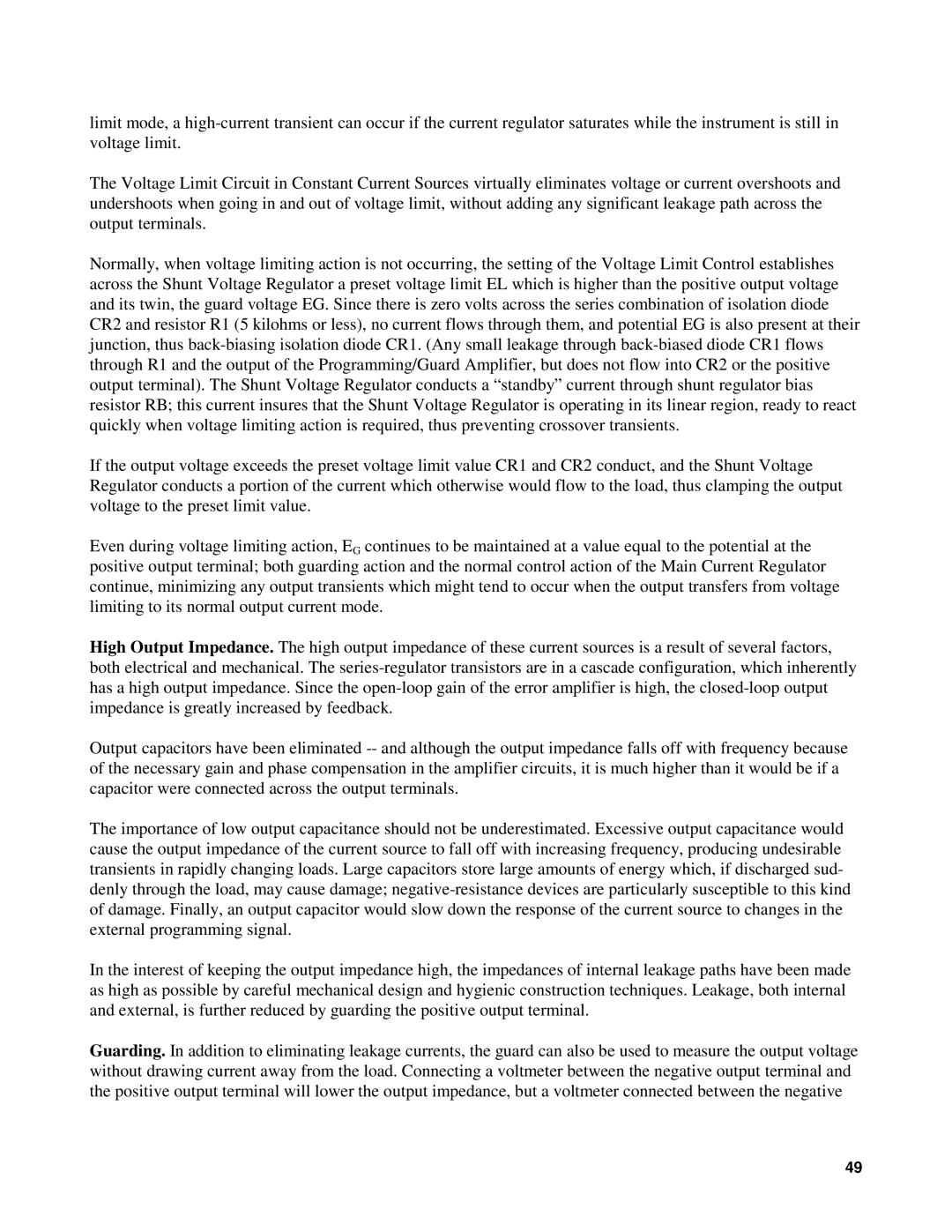limit mode, a
The Voltage Limit Circuit in Constant Current Sources virtually eliminates voltage or current overshoots and undershoots when going in and out of voltage limit, without adding any significant leakage path across the output terminals.
Normally, when voltage limiting action is not occurring, the setting of the Voltage Limit Control establishes across the Shunt Voltage Regulator a preset voltage limit EL which is higher than the positive output voltage and its twin, the guard voltage EG. Since there is zero volts across the series combination of isolation diode CR2 and resistor R1 (5 kilohms or less), no current flows through them, and potential EG is also present at their junction, thus
If the output voltage exceeds the preset voltage limit value CR1 and CR2 conduct, and the Shunt Voltage Regulator conducts a portion of the current which otherwise would flow to the load, thus clamping the output voltage to the preset limit value.
Even during voltage limiting action, EG continues to be maintained at a value equal to the potential at the positive output terminal; both guarding action and the normal control action of the Main Current Regulator continue, minimizing any output transients which might tend to occur when the output transfers from voltage limiting to its normal output current mode.
High Output Impedance. The high output impedance of these current sources is a result of several factors, both electrical and mechanical. The
Output capacitors have been eliminated
The importance of low output capacitance should not be underestimated. Excessive output capacitance would cause the output impedance of the current source to fall off with increasing frequency, producing undesirable transients in rapidly changing loads. Large capacitors store large amounts of energy which, if discharged sud- denly through the load, may cause damage;
In the interest of keeping the output impedance high, the impedances of internal leakage paths have been made as high as possible by careful mechanical design and hygienic construction techniques. Leakage, both internal and external, is further reduced by guarding the positive output terminal.
Guarding. In addition to eliminating leakage currents, the guard can also be used to measure the output voltage without drawing current away from the load. Connecting a voltmeter between the negative output terminal and the positive output terminal will lower the output impedance, but a voltmeter connected between the negative
49
